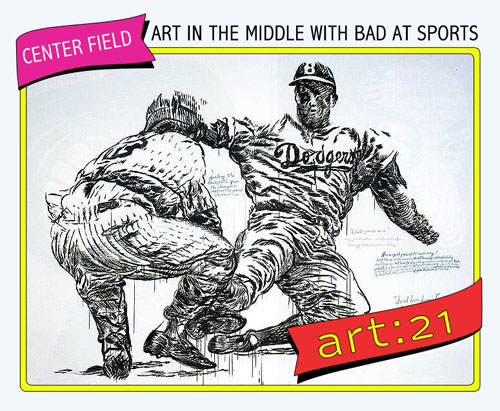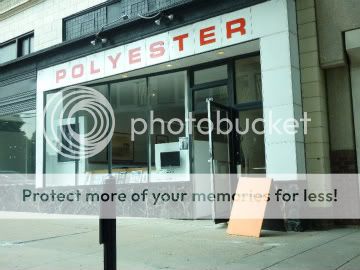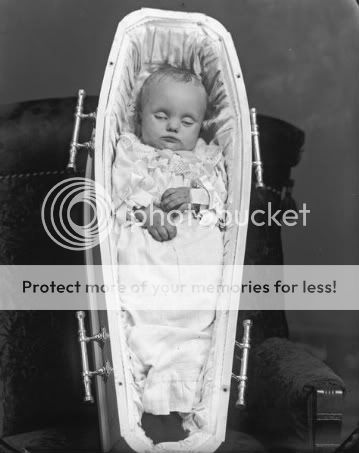Like many people, my girlfriend and I set out on a road trip this summer. Our trip took us from Chicago to Portland, following most of the Lewis and Clark Trail. After officially starting in St Charles, MO, where Louis and Clark initially met for their historic journey, we headed west, hitting not only typical locations like Yellowstone, The Badlands, and Mount Rushmore, but also a few random towns along the way, like Mitchell, SD (home of the only Corn Palace in the world). I had not planned for our trip to include many museums or galleries, but while driving downtown in Omaha, NE, I spotted the word ‘Polyester’ painted in orange on a building’s facade. We drove back around the block and to my surprise, it was a bookstore and gallery specializing in contemporary and vintage photographs.
Founded in 2006 by Bill Eiseman in downtown Los Angeles, Polyester has established itself as a unique voice within photography. In 2010, Eiseman moved shop to Omaha, where he has been able to expand his gallery to include screenings. In the spirit of the final days of summer, I asked Bill a few questions about my find in Omaha.
Meg Onli: What prompted a move from such a large scene (Los Angeles) to a place such as Omaha?
Bill Eiseman: It was a decision I spent six months deliberating. The downtown artwalk in Los Angeles brought anywhere from 500 to 1500 people into my gallery on the second Thursday of every month. The crowd at our last monthly artwalk here in downtown Omaha numbered roughly 50. From an economic standpoint, it probably wasn’t the wisest of choices, at least in the short term. But as a gallerist, since I am now the only contemporary photography gallery in the region, suddenly I have the creative freedom to exhibit known, represented artists and works that were previously unavailable to me and in a space that is more than four times the size as its L.A. predecessor (for less rent). [It] also allows me to have both a main gallery and annex, a dedicated video room, present live performances and film screenings — pretty much everything I ever wanted to do but never had the space to make a reality. There is also a certain amount of notoriety that comes with being new and unique, which I must admit to enjoying. And I spend (at most) fifteen minutes per day in my car, which is something that Los Angelenos can only dream about.
MO: Could you discuss a little bit about Omaha’s art scene? When I was driving around downtown, you were the only gallery I spotted. Is there a distinct center or is everything spread out throughout the city?
BE: Nearly the entirety of the city’s art scene is situated within a one square mile area of downtown. As a city boasting more than its share of Fortune 500 companies, there is a healthy public commitment to the arts in general. Omaha hosts an impressive and well-funded art museum and contemporary arts center and there are quite a few artist-run cooperatives scattered about — but you can count the number of private commercial galleries on one hand and nearly all of the work exhibited is by local artists, split fairly evenly between contemporary and the Thomas Kincaid school. My observation so far is that with a lack of galleries to nurture new artists or a graduate arts program at either of the city’s two universities, the talent pool is far less than one would expect for a city this size, and the quality of work being shown has sometimes been at a level below what one would expect. Hopefully, that is changing. There are two new galleries scheduled to open before the year is out, both with owners relocating from the East Coast. Nebraska is fortunate that the economic downturn affecting much of the country has not happened here, which makes it quite inviting to anyone looking for a safe(r) place to start a business.
MO: What benefits have you seen in working in a smaller community?
BE: The most exciting aspect of moving here is that because there is such a small gallery scene, everything we do is completely new and unique and draws a lot of attention. Neither the artists nor the subject matter of any work since opening has ever been seen here before. We opened in February with an erotic art show — the first in Omaha since the early ’90s. We ran an outdoor film series on the rooftop of an adjacent building for 8 weeks this summer — the city’s first outdoor cinema. To establish a reputation among the arts community took no time whatsoever. As for the general population, this is the Midwest and people do tend to be less curious and more cautious. The concept that one can actually purchase original art by known artists or even collect art as a hobby is not common knowledge — as is feeling free to walk into a gallery without expecting to be charged admission. Finding a way to educate the public about galleries and their role is easily the biggest challenge brought on by the move.
MO: It’s hard not to see a correlation between the gallery and John Water’s 1981 film, Polyester. Both have a balance between commercial and subversive subject matters. Has the film played a role in naming your space?
BE: I’m familiar with the film and I can see why you would make that connection. A lot of people do. One can definitely sense a similar pop culture influence when they step into the gallery. However, as much as I would like to credit Mr. Waters or perhaps even offer the analogy of something man-made and not intrinsically organic, the true genesis of Polyester is that I saw the name on a shopfront in Melbourne, Australia, many years ago and it just stuck in my mind.
MO: This year, you have shown vintage circus and sideshow photographs in your show shocked and amazed, works by Adrian Boot and Wil Gordon, and Charles Van Schaick’s Wisconsin Death Trip. Are you typically drawn to works that reflect oddities, subgroups, or subjects that are often marginalized by society?
BE: “Anything that fascinates or offends” is what I like to kiddingly refer to as my overall aesthetic. I am definitely a pop culture person. And for whatever reasons, I have always been drawn to the subject matter of the shows that I’ve curated — be it sideshow photos, crime scenes, ’50s cheesecake, etc. Being able to share those interests with the public is for me the most satisfying part of what I do. From a purely business standpoint, photography is a much harder sell than paintings or prints — today everyone is a photographer; everyone has at least one camera on their person at any time. By creating exhibitions that often narrow the focus to one particular subculture is at times, to be honest, a calculated effort to attract like-minded individuals that are much more apt to buy. However, we have also exhibited works this year by Clive Barker, Spencer Tunick, Tracey Moffatt, Weegee, Holly Andres, and other well-known [artists], more mainstream subject-matter-wise, though they probably can be considered a bit on the edge as well.
MO: Polyester is both a bookstore and gallery. Do you think of them working together under one curatorial practice or do you see them as two separate entities?
BE: As a matter of economic survival, I think it is vital for owner-run galleries to have at least one supplemental source of revenue. Not every exhibition is a sell-out. I’ve had stretches of up to three months without a single work going out the door. My background is in books. I operated independent bookstores for 15 years before I opened my first gallery. To me, books are as much a valid art form as what is on my walls. I try to have as many with covers facing out as I can comfortably fit. Not only does it add to the overall visual aesthetic, but as most people are hesitant to walk into a gallery because they’re afraid someone might ask them to buy something, I find that having books at the front of the space makes it much less intimidating and more inviting.








Pingback: Center Field | Interview with Bill Eiseman : Bad at Sports